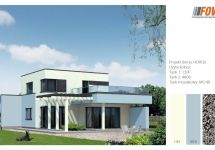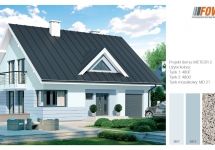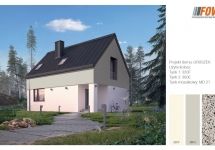Grey and white colour
Grey is a colour of the lowest saturation and may be light or dark and also warm or cold. Warm grey colours are derived from yellow, orange and red. The coldest ones come from blue. Historically greyness is associated with poor architecture, non-plastered walls and roofs covered with asbestos and concrete tiles.
Contemporary greyness is connected with modern architecture and concrete colours, plastic cladding, as well as metal, steel and aluminium. On facades, thanks to its neutrality, greyness intensifies and highlights other colours. Can be used even with very vivid colours creating a background for them.
White is associated with order and simplicity. Best of all colours it can highlight purity of the form, texture and body, therefore is is frequently used in contemporary architecture. White also features high variability resulting from light and shadow influence, as well as colourful reflections which appear on walls of the building.
White, due to its high brightness, has strong reflective properties, which reduces surface heat and protects the interior from overheating. The lime walls were used for hygienic purposes in historical times, as well as protection of porous materials - especially wood - against the impact of weather conditions. In Poland white was also a popular colour both for country cottages and facades of manor houses (a traditional white manor house). Nowadays, pure white is often replaced with bright, pastel shades of chromatic colours, so called coloured white. They can feature warmth - being derived from yellow, red and orange or cold - being derived form sky-blue or cold green. White, due to its high brightness, harmonizes well with all colours and can be used for example to tone down too strong contrasts between chromatic colours.















